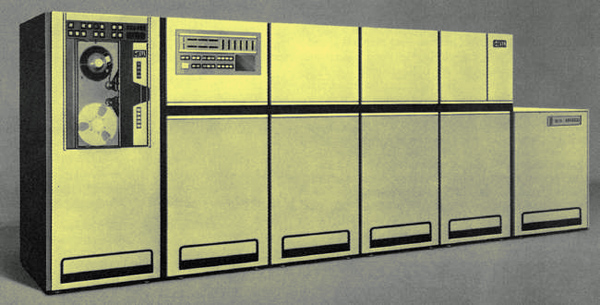|

The Hell Digiset - A European alternative to the Videocomp
The latest method of high speed typesetting for printing A forms the characters on a cathode-ray tube and the resulting images are recorded on photographic film, which is subsequently used for making lithographic plates. Characters are a built up from closely spaced vertical or horizontal parallel lines traced by the CRT spot, rather on the principle of television picture synthesis except that the spot intensity is not continuously variable - just full on or full off. The instant's of turning on and off the beam current are determined by binary digital data held in magnetic-tape and disc stores under the control of a computer-like system. An interesting feature of the method is that it is not restricted to letters, numbers and other such characters but can also be used for composing diagrams, which can be directly interspersed with the text.
Wireless Worlds printing has not quite reached this advanced technique though much of the journals text is composed by an earlier phototypesetting method (see 'Electronics in Typesetting', March 1968). But our publishers have an associated printing company, Computaprint Ltd., which has just installed a machine of the fully electronic kind described above, the RCA Videocomp 70 / 800. This is capable of typesetting at the astonishing speed of 6,000 characters (about two columns of this page) per second which compares with up to 500 characters /second for non-CRT photocomposition, 5 characters /second for conventional 'hot metal' mechanical typesetters and 1 character /second for hand setting. Another commercial machine, the Mergenthaler Linotron, is claimed to work at up to 10,000 characters / second.
The Videocomp 70/800 is in fact a room-full of computer-like equipment: CRT photographic unit, two magnetic tape stores, a random-access disc store, a data processor with a core store of its own, and an operators console with a typewriter. The CRT forms characters from vertical lines with a definition of up to 1800 lines /inch and diagrams up to 450 lines/inch. Type of various fonts (styles) can be set with character sizes varying from 4 to 96 points (72 points = l inch), and characters can be altered electronically to form Roman, oblique (quasi italic), expanded and condensed versions of the basic 'face'. A piece of text is composed line by line at any width up to 70 picas (11.67in) and to any required length on the film, which is moved past the CRT optical system at speeds up to 40 ft /minute. Drawings and diagrams measuring. up to 7in x 9in can be composed.
One possible outcome of this general technique is further development in the remote control of newspaper printing, already being done to some extent by facsimile transmission. Now that the visual as well as the verbal content of newspapers can be codified and transmitted electronically as digital data there will be less need to consider news as freight which has to be physically distributed from centralized printing works.
The video simulation of the Voyager mission was output by RCA on a Videocomp. In the UK publications such as World Airways Guide were set on the Videocomp at Computaprint. As a backup for Computaprint's Videocomp, a courier held an open airline ticket to take magnetic tapes to RCA in California where the only other machine existed. -ed.
|